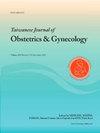Postpartum readmission associated with severe maternal morbidity: A systematic review
IF 2.2
4区 医学
Q2 OBSTETRICS & GYNECOLOGY
引用次数: 0
Abstract
Severe maternal morbidity (SMM) is now conceptualized to identify life-threatening events prior to maternal mortality worldwide. SMM could occur either during delivery hospitalization or arising from postpartum readmission (PPR). Apart from increase in medical cost and extended length of hospital stay during delivery, women with SMM also carry higher risk for postpartum readmission for management of delivery related complications or comorbidities. This review aims to collate published literature related to postpartum readmission associated with SMM including readmission rate, timeframe, diagnoses, personal and hospital factors. Literature search from PubMed was performed to identify relevant studies performed at population level published from 2015 to 2025. After exclusion, 11 articles were finally included. The PPR rate of SMM during delivery hospitalization varied from 2.45 % to 23.7 %. SMM at delivery was proven a 40–50 % increased risk for early and late readmission till one year postpartum. SMM arising from postpartum readmissions ranged from 12.1 % to 19.5 %. Over half of readmissions associated with SMM occurred within 7 days postpartum. Obstetric hemorrhage was the most popular diagnosis and blood transfusion was the most common SMM indicator in PPR associated with SMM. Hypertensive disorders of pregnancy such as eclampsia, preeclampsia were the other important etiology contributing to PPR. Cesarean delivery and other personal factors such as advanced maternal age, pre-exiting medical conditions were also important factors for PPR associated with SMM. This review confirmed women with SMM carried higher risk for readmission. However, the current evidence base is significantly limited by its overwhelming focus on the US context. The conditions in other regions, especially those with elevated maternal mortality or SMM rates, are a critical blind spot. Therefore, extensive research focusing on diverse global populations would be urgently needed.
与严重产妇发病率相关的产后再入院:一项系统综述
严重孕产妇发病率(SMM)现在的概念是在全世界孕产妇死亡之前确定危及生命的事件。SMM可能发生在分娩住院期间或产后再入院(PPR)。除了医疗费用增加和分娩期间住院时间延长外,患有SMM的妇女产后再入院治疗分娩相关并发症或合并症的风险也更高。本综述旨在整理与产后再入院相关的已发表文献,包括再入院率、时间、诊断、个人和医院因素。从PubMed进行文献检索,以确定2015年至2025年在人群水平上发表的相关研究。排除后,最终纳入11篇文章。分娩住院期间SMM的PPR率为2.45% ~ 23.7%。分娩时的SMM被证明增加了40 - 50%的早期和晚期再入院的风险,直到产后一年。产后再入院的SMM发生率从12.1%到19.5%不等。超过一半与SMM相关的再入院发生在产后7天内。产科出血是最常见的诊断,输血是与SMM相关的PPR最常见的SMM指标。妊娠期高血压疾病如子痫、先兆子痫是导致PPR的另一个重要病因。剖宫产和其他个人因素,如高龄产妇、孕前医疗状况,也是与SMM相关的PPR的重要因素。本综述证实,患有SMM的女性有较高的再入院风险。然而,目前的证据基础由于过于关注美国背景而受到严重限制。其他地区的情况,特别是孕产妇死亡率或产妇死亡率较高的地区,是一个严重的盲点。因此,迫切需要对全球不同人口进行广泛的研究。
本文章由计算机程序翻译,如有差异,请以英文原文为准。
求助全文
约1分钟内获得全文
求助全文
来源期刊

Taiwanese Journal of Obstetrics & Gynecology
OBSTETRICS & GYNECOLOGY-
CiteScore
3.60
自引率
23.80%
发文量
207
审稿时长
4-8 weeks
期刊介绍:
Taiwanese Journal of Obstetrics and Gynecology is a peer-reviewed journal and open access publishing editorials, reviews, original articles, short communications, case reports, research letters, correspondence and letters to the editor in the field of obstetrics and gynecology.
The aims of the journal are to:
1.Publish cutting-edge, innovative and topical research that addresses screening, diagnosis, management and care in women''s health
2.Deliver evidence-based information
3.Promote the sharing of clinical experience
4.Address women-related health promotion
The journal provides comprehensive coverage of topics in obstetrics & gynecology and women''s health including maternal-fetal medicine, reproductive endocrinology/infertility, and gynecologic oncology. Taiwan Association of Obstetrics and Gynecology.
 求助内容:
求助内容: 应助结果提醒方式:
应助结果提醒方式:


